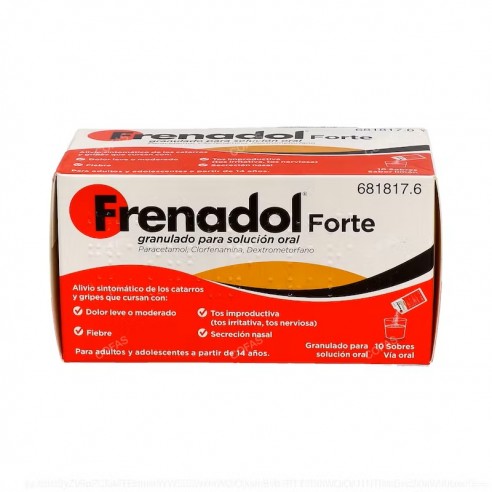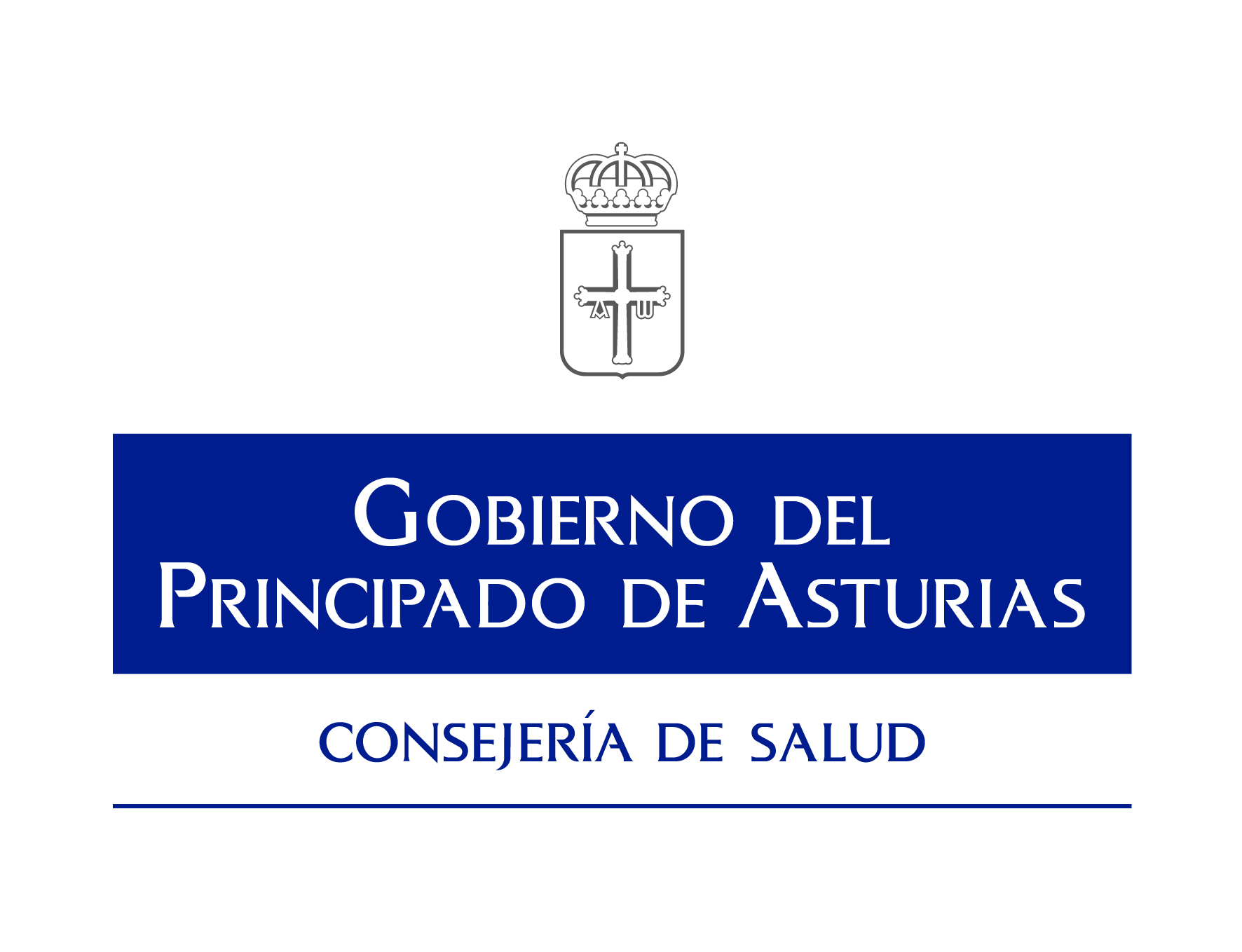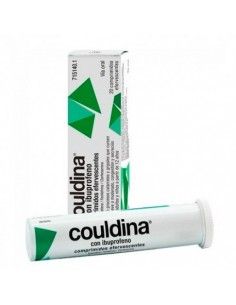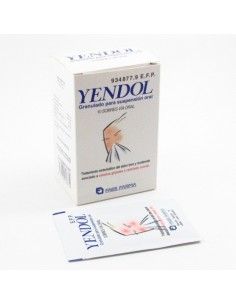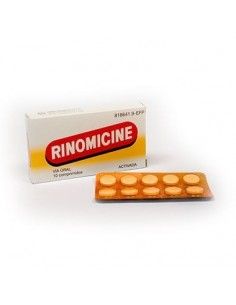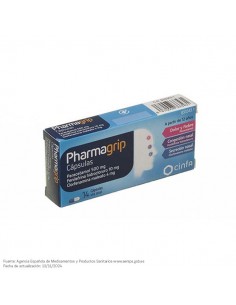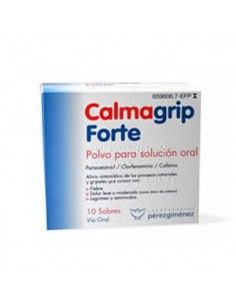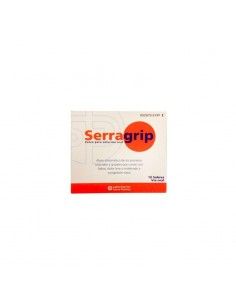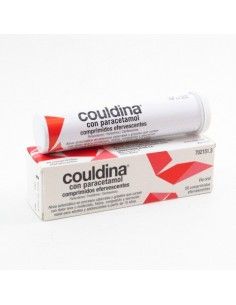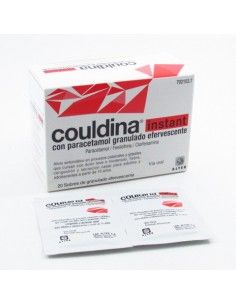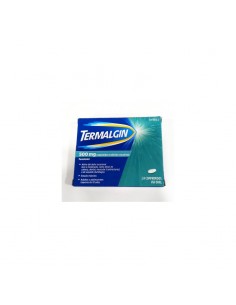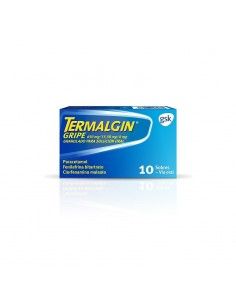Frenadol forte 10 sachets
Action and mechanism
- Combination of an [ANALGESIC] [ANTIPIRETIC], a [HISTAMINERGIC ANTAGONIST (H-1)] and an [ANTITUSIVE]. Paracetamol exerts analgesic and antipyretic effects probably due to inhibition of prostaglandin synthesis at the central level. Chlorphenamine acts as a histaminergic and muscarinic antagonist, eliminating cold symptoms such as sneezing, whining and rhinorrhoea. Finally, dextromethorphan depresses the cough centre.
Indications
- COMMON COLD]. Symptomatic treatment of catarrhal processes and [FLU] with fever, moderate pain, headache, non-productive cough and rhinorrhoea.
Posology
Dosage:
- Adults, oral: 1 tablet/6-8 hours or 1 sachet/6-8 hours.
- Children, oral:
* Children 12 years and older: 1 tablet/6-8 hours or 1 sachet/6-8 hours.
* Children under 12 years of age: The safety and efficacy of this medicine have not been evaluated.
The maximum daily dose is 6 tablets/24 hours, spaced at least 6 hours apart.
Guidelines for correct administration
Effervescent tablets should be dissolved in half a glass of water and then swallowed when the bubbling has stopped. The sachets should be dissolved in half a glass or cup of hot water and then sweetened if desired. It is advisable to administer the last dose before going to bed. This medicine should be started when the first symptoms appear. As soon as the symptoms disappear, this medication should be discontinued.
Contraindications
- Hypersensitivity to any component of the medicinal product, including cases of [PARACETAMOL ALLERGY] or [OPIOID ALLERGY].
- HEPATOPATHY], such as [HEPATIC INSUFFICIENCY] or [HEPATITIS]. Paracetamol may cause hepatotoxicity.
- PORPHYRIA]. H1 antihistamines are not considered safe in patients with porphyria.
- Patients undergoing treatment with MAOI or SSRI antidepressants (see Interactions).
Warnings about excipients:
- This medicinal product contains sucrose. Patients with hereditary [FRUCTOSE INTOLERANCE], glucose or galactose malabsorption, or sucrase-isomaltase insufficiency should not take this medicinal product.
Precautions
- RENAL INSUFFICIENCY]. Accumulation of the active substances may occur. Renal adverse reactions to paracetamol are more frequent in these patients.
- Patients suffering from [GLAUCOMA], [PROSTATIC HYPERPLASIA] or [URINARY BLADDER OBSTRUCTION], [ARTERIAL HYPERTENSION], [CARDIAC ARRHYTHMIA], [SERIOUS MYASTHENIA], stenosing [PEPTIC ULCER] or [INTESTINAL OBSTRUCTION]. Chlorphenamine may worsen these conditions due to its anticholinergic effects.
- Persistent or chronic cough, such as in association with [ASTHMA], [PULMONARY ILLNESS] or [CHRONIC OBSTRUCTIVE PULMONARY DISEASE]. Chlorphenamine and dextromethorphan may worsen these processes due to increased viscosity of secretions, and inhibition of cough. Bronchospastic reactions have been described when paracetamol is administered to asthmatic patients with [SALICYLATE ALLERGY], and special caution is recommended in these patients.
- EPILEPSIA]. Some H1-antihistamines have been associated with the occurrence of seizures.
- BLOOD DYSCRASIAS]. Paracetamol may occasionally lead to [ANEMIA], [LEUCOPENIA] or [TROMBOPENIA]. Extreme precautions should be taken, avoiding prolonged treatment, and regular blood counts should be carried out in these cases.
- Hepatotoxicity. The metabolism of paracetamol could give rise to hepatotoxic substances. It is recommended to avoid its use in patients with previous liver damage (see Contraindications), as well as to take extreme precautions in those with [CHRONIC ALCOHOLISM] or other factors that could trigger hepatotoxicity phenomena. It is advisable to avoid prolonged treatment and not to exceed doses of 2 g/24 hours in these patients. Similarly, it is recommended to monitor transaminase levels and discontinue treatment in the event of a significant increase in these levels.
- Dependence. Although very rare, there have been cases of dependence on dextromethorphan products. It is recommended to take extreme precautions and to monitor the patient, especially children, in case of symptoms of abuse.
Warnings about excipients:
- This medicinal product contains yellow orange S as an excipient. It may cause allergic reactions including asthma, especially in patients with [SALICYLATE ALLERGY].
Advice to the patient
- It is advisable to drink plenty of water during treatment, avoiding the intake of alcoholic beverages as far as possible.
- The doctor should be notified of any change in the patient's behaviour or mood.
- It is recommended not to exceed the recommended daily doses and to avoid treatment for more than ten days without a prescription.
- If symptoms continue or worsen after five days, a doctor should be consulted.
- The doctor should be notified of any drugs the patient is taking, especially antidepressants.
- Patients with glaucoma or urinary retention should notify their doctor before starting treatment.
- It may cause drowsiness, so caution is recommended when driving, and not to be combined with drugs or other sedative substances such as alcohol.
Special warnings
- It is recommended to monitor the patient for signs of abuse.
- In patients treated with anticoagulants, it is recommended to follow short treatments with low doses, controlling coagulation parameters.
- The association between products containing dextromethorphan and antidepressants should be avoided, allowing at least 14 days of rest between the administration of both drugs.
- Blood counts are recommended in patients treated with high doses or for prolonged periods of time.
- It is advisable to monitor transaminase levels in patients with prolonged treatment or at risk of hepatotoxicity.
- In case of overdose, the specific antidote for paracetamol is N-acetylcysteine.
Interactions
- Ethyl alcohol. Ingestion of alcoholic beverages together with paracetamol may cause liver damage. In addition, the sedative effects of chlorphenamine may be potentiated. It is recommended to avoid alcohol intake during treatment. In chronic alcoholics, no more than 2 g/24 hours of paracetamol should be administered.
- Antiarrhythmics (amiodarone, quinidine). Dextromethorphan toxicity has been reported in combination with certain antiarrhythmics.
- Oral anticoagulants. In very rare cases, usually with high doses, the anticoagulant effects could be potentiated by inhibition of hepatic synthesis of coagulation factors by paracetamol. It is recommended to administer the lowest dose, with the shortest possible duration of treatment, and to monitor the INR.
- Anticholinergics (antiparkinsonians, tricyclic antidepressants, MAOIs, neuroleptics). Chlorphenamine could potentiate anticholinergic effects, so it is recommended to avoid the association.
- Oral contraceptives. They could increase the plasma clearance of paracetamol, decreasing its effects.
- Antidepressants (MAOIs, SSRIs). Co-administration of dextromethorphan products with MAOIs or SSRIs may result in serious, even fatal, adverse reactions. It is recommended to avoid the association and not to administer dextromethorphan until at least 14 days after treatment with the antidepressant.
- Activated charcoal. May cause adsorption of paracetamol, reducing its absorption and pharmacological effects.
- Chloramphenicol. May potentiate the toxicity of paracetamol, probably by inhibition of its metabolism.
- Coxibes. Coxibes may increase plasma concentrations of dextromethorphan.
- Expectorants and mucolytics. Cough inhibition by dextromethorphan could lead to lung obstruction in case of increased volume or fluidity of bronchial secretions.
- Enzyme inducers. Medicines such as barbiturates, carbamazepine, hydantoin, isoniazid, rifampicin or sulfinpyrazone could induce the metabolism of paracetamol, decreasing its effects and increasing the risk of hepatotoxicity.
- Lamotrigine. Paracetamol may reduce serum concentrations of lamotrigine, leading to a decrease in therapeutic effect.
- Propranolol. Propranolol may inhibit the metabolism of paracetamol, leading to toxic effects.
- Sedatives (opioid analgesics, barbiturates, benzodiazepines, antipsychotics). Co-administration of chlorphenamine with a sedative drug could potentiate the hypnotic action.
- Zidovudine. Paracetamol may increase the elimination of zidovudine, decreasing its effects.
Pregnancy
Some active substances in this product are able to cross the placental barrier. The safety and efficacy of this medicinal product in pregnant women have not been evaluated. It is therefore recommended to avoid taking this medicinal product unless safer therapeutic alternatives do not exist, and provided that the benefits outweigh the possible risks.
Breast-feeding
Some of the active substances of this medicinal product are excreted in milk. It is therefore recommended to discontinue breast-feeding or to avoid the use of this medicinal product in pregnant women.
Children
The safety and efficacy of this medicinal product have not been evaluated in children under 12 years of age and its use is not recommended.
Elderly
Elderly patients may be more susceptible to the adverse effects of this medicinal product and therefore it is recommended to use with caution, and to discontinue use if adverse reactions are not tolerable.
Effects on driving
This medicinal product may substantially affect the ability to drive and/or operate machinery. Patients should avoid operating dangerous machinery, including automobiles, until they are reasonably certain that they are not adversely affected by drug treatment.
Adverse reactions
The adverse reactions described are:
- Digestive. Anticholinergic phenomena such as [Nausea], [VOMITING], [DRY MOUTH], [DIARRHEA] and [STRESS] may occur. Rarer is the occurrence of [ANOREXIA].
- Hepatic. Occasionally [HEPATOPATHY] with or without [ICTERICIA] may occur.
- Cardiovascular. [HYPOTENSION] in the elderly and [TACHYCARDIA].
- Neurological/psychological. The most common adverse reaction is the occurrence of [SOMNOLENCE]. Paradoxical reactions of [EXCITABILITY], with [NERVIOSISM] and [INSOMNIA] may also occur, being especially frequent in children and the elderly.
- Genitourinary. [URINARY RETENTION].
- Allergic/dermatological. Rarely [HYPERSENSITIVITY REACTIONS], with [URTICARIA], [EXEMPTEMATIC ERUPTIONS], [EXCESS SWEATING] and [PHOTOSENSITIVITY REACTIONS].
- Ophthalmological. [MYDRIASIS], [BLURRED VISION], [OCULAR HYPERTENSION].
- Blood-borne. [ANEMIA], [HEMOLITIC ANEMIA], [LEUCOPENIA] with [NEUTROPENIA] or [GRANULOCYTHOPENIA], and [TROMBOPENIA].
- Metabolic. Rarely [HYPOGLYCEMIA].
Overdose
Symptoms: Overdose by paracetamol products is a very serious and potentially fatal poisoning. Symptoms may not appear immediately, and may take up to three days to appear. Symptoms may include confusion, excitability, with restlessness, nervousness and irritability, dizziness, nausea and vomiting, loss of appetite and liver damage. Hepatotoxicity usually manifests after 48-72 hours with nausea, vomiting, anorexia, malaise, diaphoresis, jaundice, abdominal pain, diarrhoea and liver failure.
In children, there is also a state of drowsiness and gait disturbance.
In severe cases, the patient may die from liver necrosis or acute renal failure.
The minimum toxic dose of paracetamol is 6 g in adults and 100 mg/kg in children. Doses above 20-25 g of paracetamol are potentially fatal.
In addition to symptoms of paracetamol overdose, symptoms of chlorphenamine overdose (deep sedation, anticholinergic symptoms) may occur. Dextromethorphan overdose does not usually produce severe symptoms, although increased sedation is to be expected.
Treatment: In case of overdose, a medical centre should be consulted immediately, as paracetamol poisoning can be fatal, even if no symptoms appear. In children, early identification of paracetamol overdose is particularly important, due to the severity of the symptoms, as well as the existence of a possible treatment.
In any case, gastric lavage and aspiration of stomach contents should be performed initially, preferably within four hours of ingestion. Administration of activated charcoal may reduce the amount absorbed.
There is a specific antidote for paracetamol poisoning, N-acetylcysteine. It is recommended that a dose of 300 mg/kg N-acetylcysteine, equivalent to 1.5 ml/kg of 20% aqueous solution, pH 6.5, be administered intravenously over a period of 20 hours and 15 minutes, according to the following schedule:
- Adults. An initial shock dose of 150 mg/kg (0.75 ml/kg of 20% solution) should be administered slowly intravenously over 15 minutes, either directly or diluted in 200 ml of 5% dextrose.
This is followed by a maintenance dose of 50 mg/kg (0.25 ml/kg of 20% solution) in 500 ml of 5% dextrose by slow intravenous infusion over 4 hours.
Finally, 100 mg/kg (0.50 ml/kg of 20% solution) in 1000 ml of 5% dextrose should be given as a slow intravenous infusion over 20 hours.
- Children. The same amounts per unit weight as in adults should be administered, but the volumes of dextrose should be adjusted according to the age and weight of the child in order to avoid vascular congestion.
The efficacy of the antidote is maximal if administered within 8 hours of ingestion. Effectiveness decreases progressively thereafter and is ineffective after 15 hours.
Administration of 20% N-acetylcysteine may be discontinued when blood levels of paracetamol are below 200 µg/ml.
In addition to the administration of the antidote, symptomatic treatment should be started, keeping the patient under clinical surveillance.
In the event of hepatotoxicity, it is advisable to perform a liver function test and repeat the test at 24-hour intervals.

